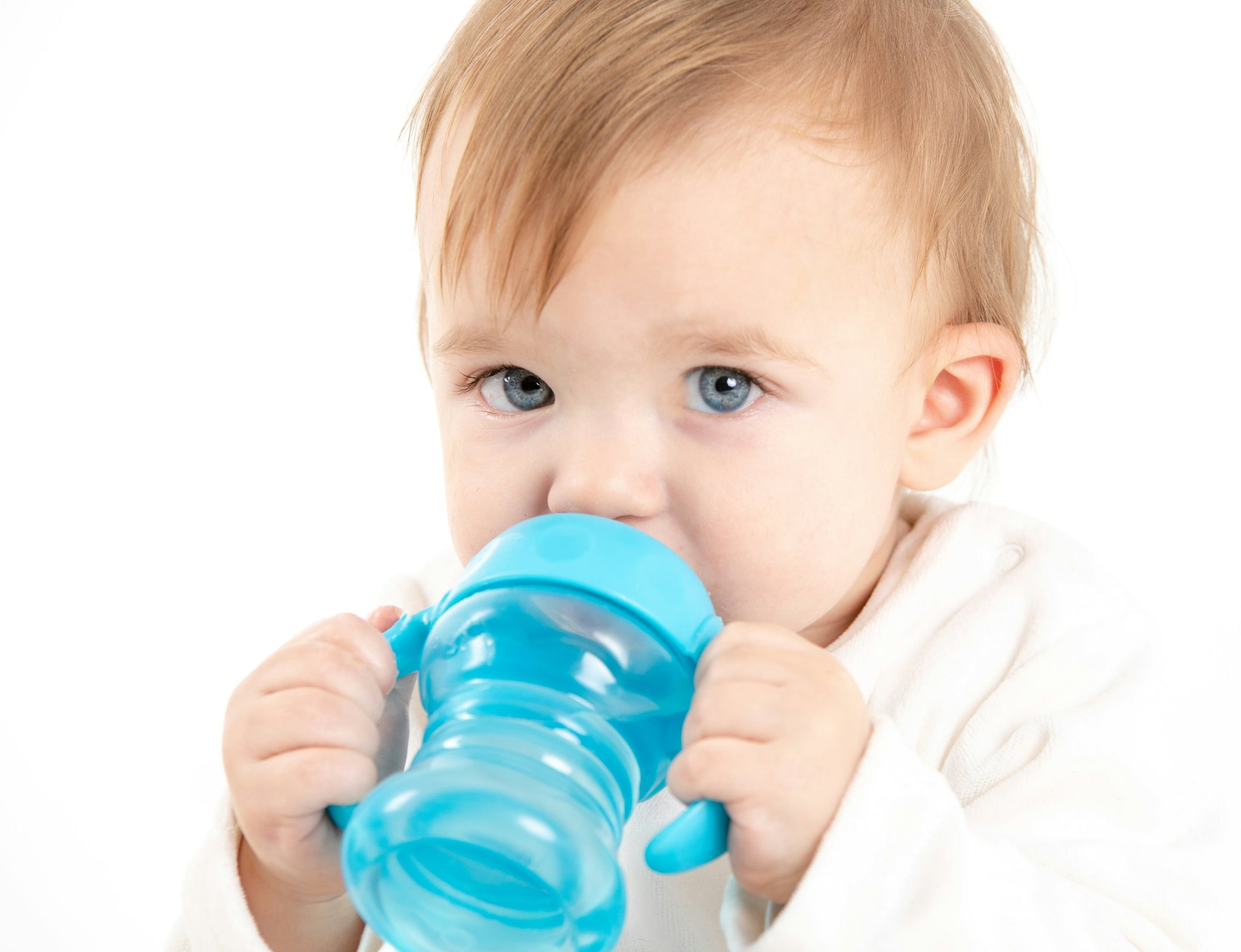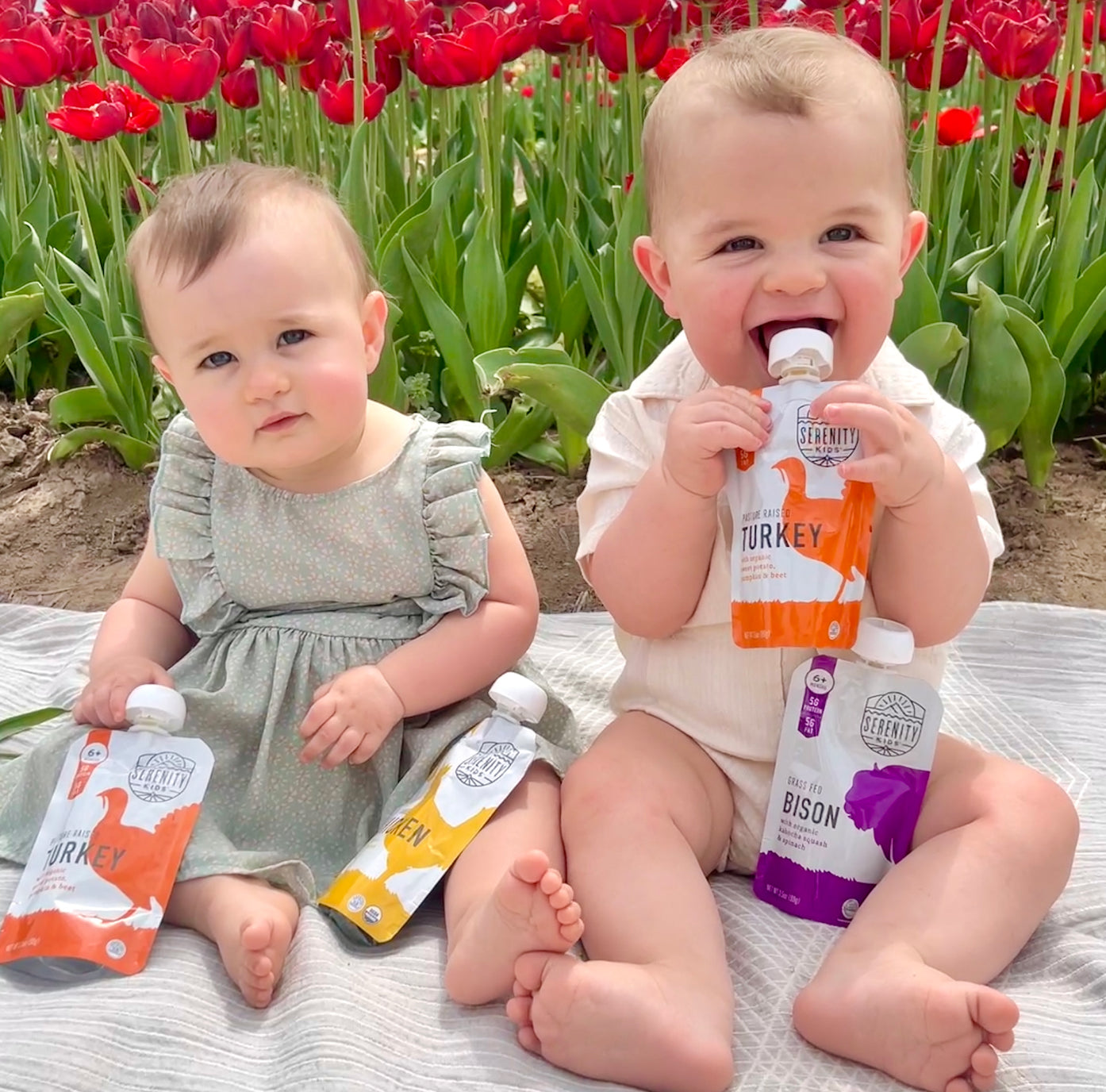Bottles (or the breast) can become your little one's constant companion as a source of comfort and nourishment. But as your little one starts to join you at the table, it's time for a new adventure: mastering the sippy cup!
We know that this bittersweet step can feel a little daunting. Maybe you're picturing a tsunami of spills and cries of protest. But don’t worry! Sippy cups aren't just adorable accessories; they're building blocks for healthy independence and lifelong drinking habits.
So to make this transition a smooth sail, we're serving up a bounty of information and a list of our favorite cups for every type of toddler preference.
So grab your own cup and join us! We'll navigate the exciting (and sometimes messy) world of cup independence together, with helpful tips and our ultimate selection of safe, organic options. Let's raise a toast (well, maybe a splash!) to happy sippers and happy parents!
Navigating the Sippy Cup Jungle: A Parent's Guide to Happy Hydration
Lost in a sea of sippy cups as you scroll Amazon or stroll the aisles of Target? Don't worry, we've got you! Let's explore the different types, tackle safety concerns, and break down what matters. First, let's look at the different types of sippy cups:
Spouted Sippy Cups
Spouted sippy cups have a spouted top and can be a nice option for transitioning from bottles since little ones can hold and suck them similar to a bottle. You can find spouted sippy cups with either a hard spout (usually made from hard plastic) or soft spout (usually made from a softer, more flexible silicone material).
However, there are some questions about how spouted sippy cups affect oral and speech development. It is reported by several speech professionals that when a child uses a sippy cup with a hard spout frequently or for an extended amount of time, it can affect certain muscles in the mouth that are used to speak, particularly sounds like “T”, “D”, and “L”. Research tells us that there’s a correlation between where the tongue is positioned during swallowing and a child’s articulation of speech sounds. Note that the negative effects came only after extended use, so using these cups occasionally should be no big deal.
Straw Cups
Straw cups can take a bit more time to get used to, but a little practice goes a long way. Straw cups often feature a soft and flexible silicone straw, and since they encourage sipping from the front of the mouth, straw cups help to promote the development of proper oral positioning. Some straw cups also have a weighted straw which can help to make sure that a child can still get fluid even if the cup is tilted. The one downside is that straw cups can be a bit harder to clean, but a straw brush makes for easier cleaning. Also, if your kid is a chewer, you may have to replace straws frequently as they get all mangled by those new teeth.
Open Cups
An open cup is the ultimate goal for independent drinking. Drinking from an open cup does require good motor skills and patience (for both the caregiver and the child) but it does promote natural oral development. Open cups are good to work on at home, but a sippy or straw cup is best for travel or when you're on the go. Just be prepared for the mess!
How to Choose the Best Sippy Cups
Choosing the best sippy cup for your child depends on your priorities. We dig into some of the most important features below.
BPA and PFAS free:
BPA stands for bisphenol A, an industrial chemical that is used to make certain plastics. Research has shown that BPA in plastic can leach into the food or beverages that it holds. Exposure to BPA is a major health concern because of the potential health effects on the brain and behavior of infants and children.
Research also suggests a possible link between BPA and increased blood pressure, type 2 diabetes, and cardiovascular disease. You might be used to looking for "BPA-free" labels, but unfortunately, when it comes to plastic, a BPA-free promise doesn't guarantee that a cup is toxin-free. Many plastics also include the concerning The per-and polyfluoroalkyl substances (PFAS). The impact of PFAS on human health is still being studied, but animal studies have suggested that they can impact growth and development. PFAS are ubiquitous in our environment (from clothing and furniture to building materials and drinking water), so it's worth avoiding them when we can.
Since most brands of plastic bottles and cups won't claim that they are PFAS free, your best bet is to opt for materials like stainless steel, glass, or silicone. In addition to unwanted chemicals, plastic cups can also harbor smells and stains.
Leak-proof:
We know that kids can make some impressive throws, and no cup is 100% spill-proof, but the more secure a cup, the less frustrating and the easier it is to take on the go.
Easy to clean:
A cup with parts that are easy to disassemble and dishwasher-safe is bound to be one of your favorite cups.
Universal lids/straws:
Every parent lives in fear of that drawer full of mis-matched cups, lids, and straws that never seem to match each other! You might save yourself a lot of headache by investing in one brand of cups and water bottles so that lids and straws are all interchangeable. We have some suggestions later in this article.
Don't Stress About Spills
One thing that many parents worry about when transitioning to a cup is potential spills. But just like when you introduced solids, we encourage you to embrace the mess. Spills are part of the learning process and it won't last forever. So literally, don't cry over spilled milk. ;)
Our Top Picks: A Sippy Cup for Every Tiny Adventurer
There are SO many sippy cups out there, so we've curated a selection of the best sippy cups to match your little one's needs:
Best First Sippy Cup
The Mushie Silicone Sippy cup has a soft silicone spout to help ease the transition from breast or bottle and support oral motor development. The handleless design is small enough for small hands to hold but also helps to transition to an open cup. Made with food-grade silicone, it is dishwasher safe and 100% BPA, BPS, PVC, and Phthalate free and dishwasher-safe.
Best Open Cup
The ezpz Tiny Cup is made from 100% food-grade silicone and is the perfect size for tiny hands to hold as they get used to regular cups. The interior of this toddler cup is slightly angled to encourage safe independent drinking. It comes in fun vibrant colors and is dishwasher safe.
Best Travel-Friendly
The Pura Kiki Insulated Stainless Steel Sippy Bottle has double-walled insulation to keep drinks cool on the go, while the valved tip makes for a mess-free journey. Plus, it's a perfect slim size to fit into your diaper bag and comes with a silicone cap to cover the top.
Best Straw Cup
We love the Elk and Friends straw cups. They have both glass cups and stainless steel sippy cups with a straw lid, soft silicone straw, and fully sealable leak-proof lid for travel. We get that you might be hesitant about glass cups, but these are wrapped in a silicone sleeve to minimize the risk of breakage. And if you're still hesitant, go for the stainless steel. Both can be easily washed in the dishwasher and they also both fit well into cup holders of car seats and strollers. We especially love these for thicker drinks like smoothies.
Making the Switch: Gentle Guidance for Happy Sipping
Remember, saying goodbye to the bottle takes time and patience. Here are some helpful tips to guide your tiny adventurer through this exciting journey:
Start Slow and Steady
Introduce the sippy cup alongside familiar meals at home. Let your little one explore and get comfortable at their own pace.
Celebrate Small Wins
Some kids might catch on quickly while others take more time to get the hang of a cup. If cups aren't an immediate success for your little one, stay patient and positive. Cheer on your little one's progress and shower them with praise, no matter how small the feat. And remember, backsliding and spills are a normal part of the process. Stay calm and offer gentle encouragement, but don't force it. If it is causing too much frustration, try again another day.
Tackle Common Challenges
Like most aspects of parenting, you might face some challenges along the way. Here are a few common scenarios when introducing cups:
- Biting Valves: Little ones love to bite on valves and straws. You might even see them "carry" their cup by dangling it from their mouth. Silicone is better for chewers because it doesn’t damage as easily as plastic, but a determined chewer can still destroy them! Gently redirect the behavior and offer chew toys or teething rings as alternatives. Be sure to throw out chewed-up valves and straws and replace them with new ones.
- Refusal: You might find that your little one simply refuses to give up the bottle or drink from a cup. If this happens, try to get them invested in the process and make the experience fun for them. You might let them decorate the cup with stickers or bring them shopping and let them pick out the color.
- Throwing: Sometimes toddlers throw cups out of frustration or simply for a reaction. Gently remind them that we don't throw cups or that cups stay on the table. If the behavior continues, remove the cup from the table until they are ready to try again.
️Open Communication
Talk to your child about this transition, and consult your health provider if you have any concerns about your baby's transition or if they haven't taken to the cup by 18 months.
Happy Sipping!
The bottom line is that the best sippy cup for your little one depends on their preferences and your circumstances - do what works for you!
As always, we're cheering you on. Happy sipping!








































